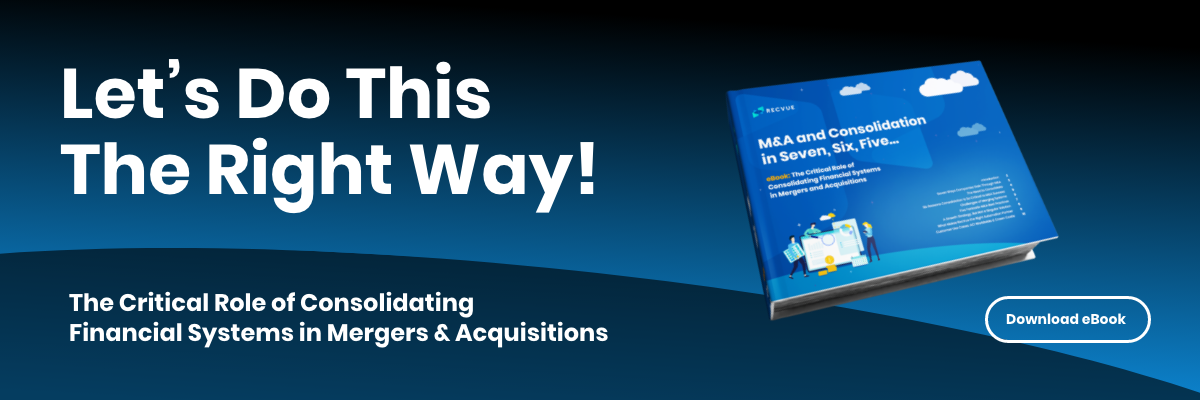Consolidate Your Complexity
Author: Keshav Singh
In a world of ever-increasing digitization, businesses need a guide to help them navigate the complexities of modern billing. Only a top-tier solution such as RecVue is capable of fulfilling customer expectations with adaptability and accuracy within a user-friendly, configurable interface. RecVue’s robust billing engine was specifically created to cater to all revenue models central to today’s business requirements and flexible enough to address all configurable pricing needs.
Due to the complexities of modern billing, businesses today are losing time and money.
According to findings from a survey by the research firm Censuswide, nearly three-quarters of finance organizations spend as much as 520 hours (about 10 people hours per week) annually on manual accounts payable tasks such as invoice processing.
Today’s businesses face a slew of evolving challenges that existing software solutions and continued reliance on manual processing cannot handle quickly or effectively.
Challenges that may arise could include any of the following:
- Different contract lengths
- Recurring invoices
- Interest rates
- Early termination fees
- Usage-based billing
- Frequent contract modification
- Periodic price escalations
- Revenue sharing
- Tiered pricing
- Obsolete code base
Interestingly enough, the technological advances employed to help address this ever-growing level of complex billing needs are at the root of the cause in this not-so-vicious cycle.
Billing has become complicated as consumers have become accustomed to a more fulfilling customer service experience. The reason for that? Technology, of course.
“We now live in a consumption based economy, where we enjoy the convenience of subscribing to services that will literally bring things to our doorstep,” said Amanda Martinez Carrillo, RecVue’s Principal Solutions and Revenue Expert, with over a decade spent helping companies streamline financial operations and order to cash automation needs.

“As consumers, we’ve been given the flexibility to subscribe, purchase and experience products with the click of a button, which means as quickly as we decide we want something we also have the flexibility to change our mind. Here lies the new complexity of what we call billing.”
As Forbes noted in an article on the complex billing model, “The reality is that companies spend considerable energy conceiving new billing strategies, which are driven by consumer demand for greater variety in the type, quantity and quality of goods and services from which they have to choose.”
Martinez Carrillo, with first-hand experience in the journey from spreadsheets to automation through a variety of revenue accounting roles, compared customer contracts nowadays to the giant wheel on “Wheel of Fortune.” Imagine the wheel spinning with pricing and packaging possibilities, billing models driven by fixed fees, volume, tiers, usage and consumption models, resulting in either simple or complex revenue recognition rules based on delivery which may or may not be tied to how and when the bill is issued.
All the while, she said, an organization’s “back office is waiting for that wheel of options to stop spinning so they can stop creating a new spreadsheet for all the new options.”
Managing large portions of the billing process manually suffices only until the company starts to scale quickly.
ExteNet Systems, a rapidly expanding provider of converged communications infrastructure, was an organization in such a predicament. Joe Cummings, ExteNet’s Vice President of Information Technology, noted "At our growth rate, we were adding an average two employees per year just to keep up with the billing and revenue recognition demands. In addition, we were experiencing delays in invoicing which was an unsustainable path forward."
For businesses in the medium to large size category, the way forward is consolidation and automation.
Let’s look a bit deeper into each of these potential options.
Consolidate
When there's a large amount of information coming from many different sources, manual billing as a regularly relied upon task becomes cumbersome and time-consuming. The ability to integrate multiple input sources into a single source of truth is becoming a more critical need in today’s business landscape.
ACI Worldwide, the universal payments company, accumulated three separate billing systems covering more than 100,000 different pricing models due to rapid growth and acquisitions. Additionally, the company had to integrate more than 80 distinct usage systems directly into their billing engine, adding even more layers of complexity. By implementing RecVue's solution, ACI integrated all of its usage-based transactions into a single platform.
Crown Castle, the largest provider of communications infrastructure in the United States, acquired five fiber businesses in the past decade.
This rapid growth came with its own challenges that the company had to incorporate into its financial operations. Those challenges included:
- Different contract lengths
- Recurring revenue invoices
- Interest rates
- Early termination fees
Automate
While consolidating all information into a single platform is the first step towards updating the order-to-cash cycle for the 21st century, this newfound control opens up new possibilities in terms of automating the process.
ACI was able to reduce its manual intervention in the billing process by 73%, taking advantage of its newfound single source of cohesive data as the firm automated its order-to-invoice cycle. More specifically, the business was able to automate complex usage-based calculations and CPI applications, all while reducing the need for spreadsheets to collect usage data and verify billing.
Textainer, a lessor of intermodal containers, also managed to update their complex billing process. While simultaneously replacing an outdated codebase, Textainer was able to eliminate manual parts of their per-diem leasing process through RecVue's flexibility in handling asset-based billing scenarios.
Textainer was also able to automate its support functions, which included 40 unique reports and queries.
In each of the presented scenarios, consolidation and automation were critical steps in wrangling billing complexity.
RecVue’s monetization platform was able to address specific needs and achieve these objectives so that the businesses presented could scale at speed.
“At the end of the day, complex billing calculations still need to become an invoice, either a single invoice or split invoices to multiple end users,” said Martinez Carrillo.

“The sky is the limit for how to slice and dice who pays what and businesses are not looking to split their invoices based on system limitations, but rather to meet their customer’s needs to create a seamless process and a great customer experience.”
When it comes to mergers and acquisitions, addressing and consolidating all types of complexity becomes the top priority for executives. Learn the Five Best Practices to successfully integrate technical infrastructure and financial processes in this eBook.
If you would like to learn more about how RecVue's Order-to-Cash solutions can help your organization’s complex billing processes down the path of consolidation and/or automation, contact us for more information or to schedule a demo.


